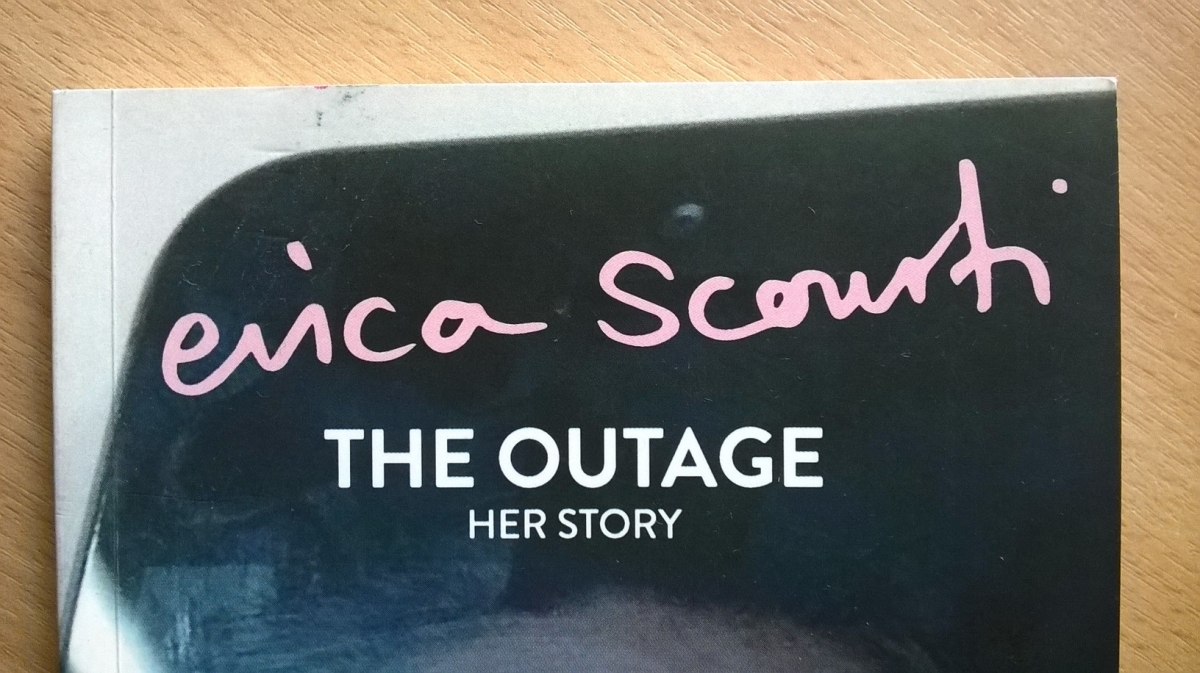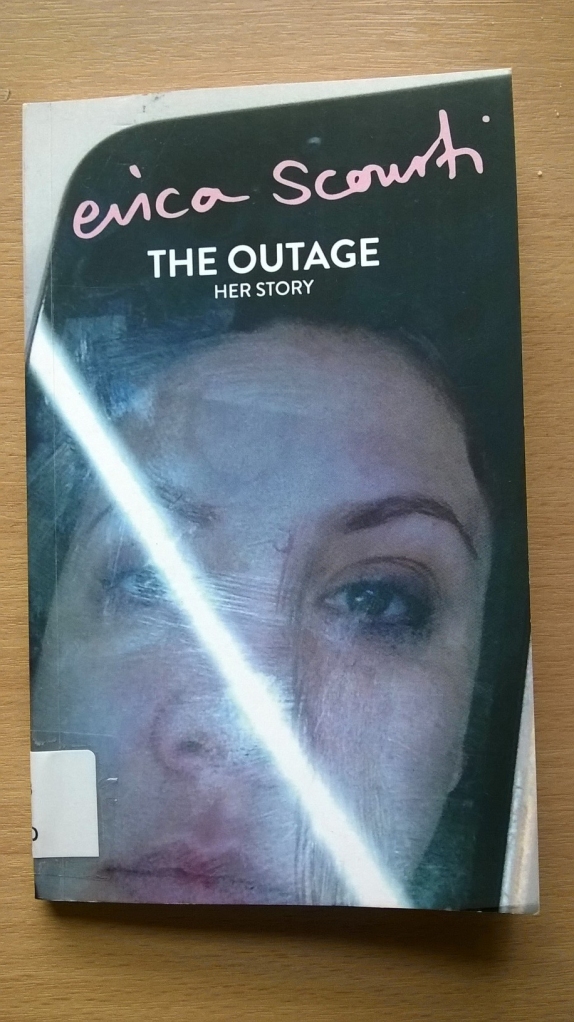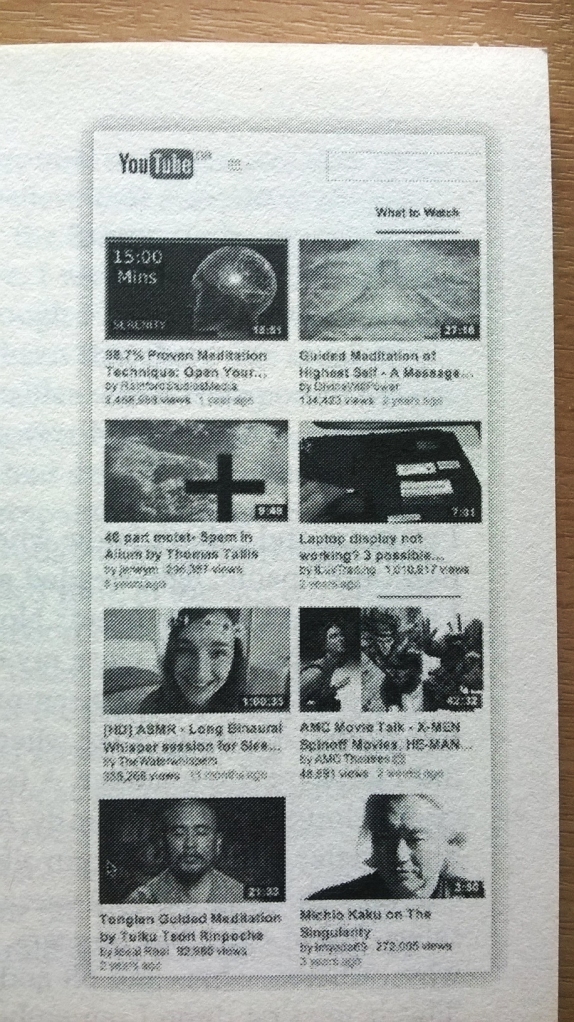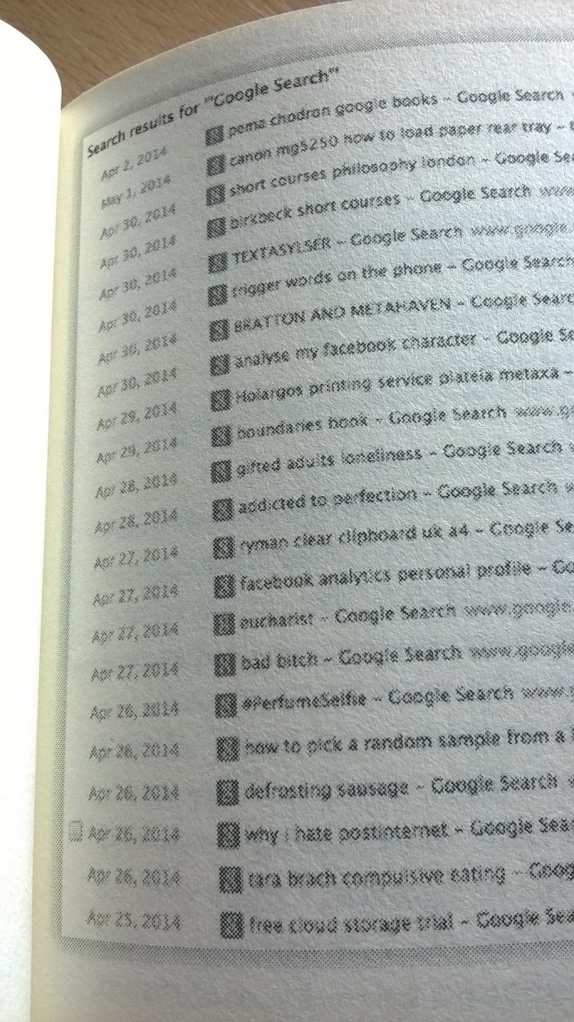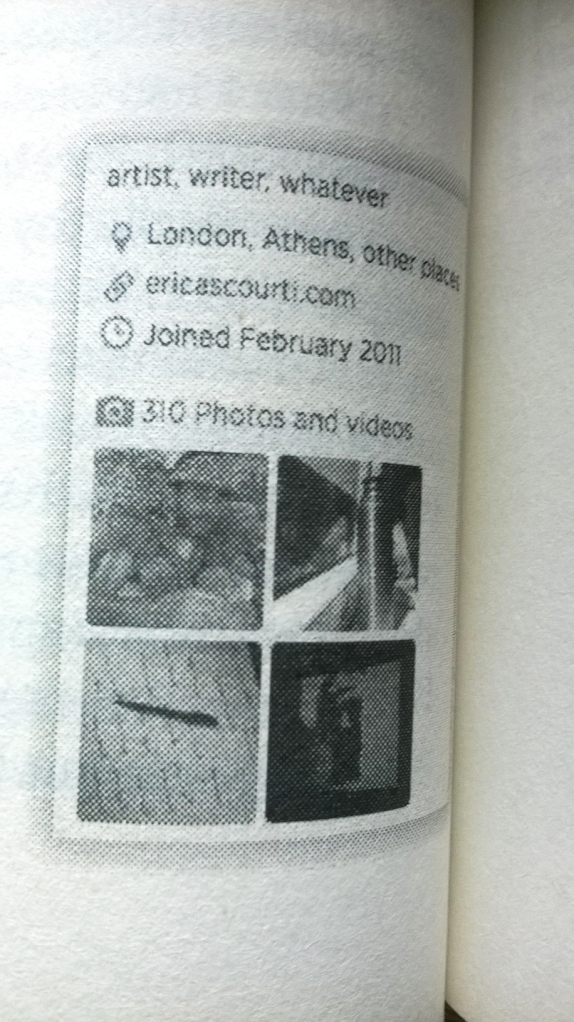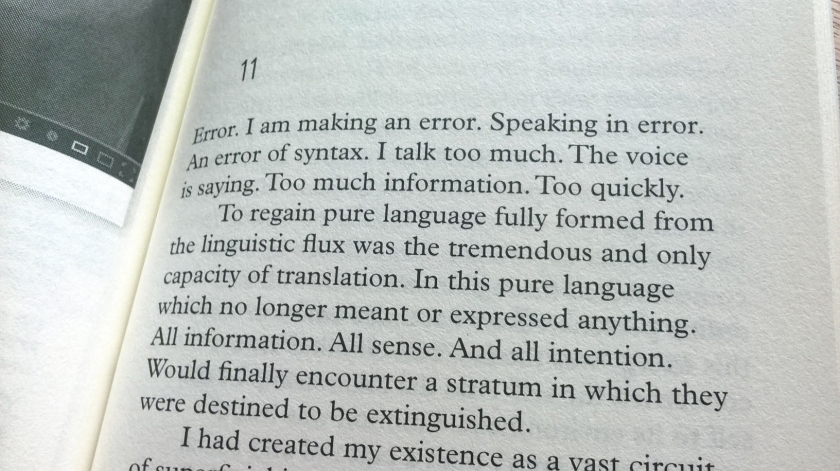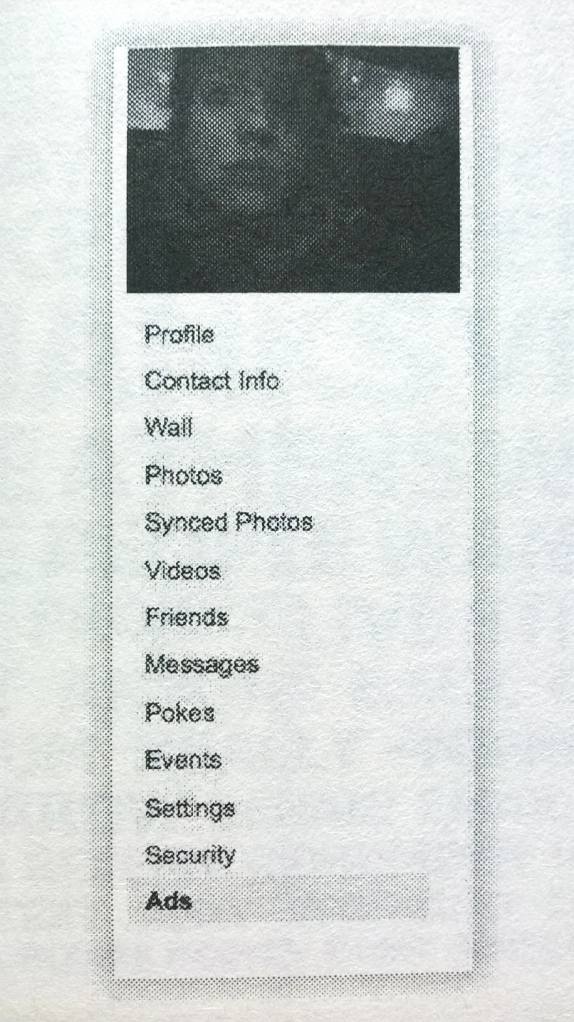Erica Scourti is an artist who investigates the developing presence of digital technology in the daily life of the individual, making creative responses to the software and platforms we use without thought. Scourti often uses herself as an example and her own activity on websites like social media to produce a representative view of how technology can impact the individual, but also how it can come to represent them as well. Scourti often uses video and moving image to make her responses however I was particularly interested in the book she made which combines writing and fragments of online information to make an abstract representation of Scourti and her life as a person. The book is written by a ghost writer and is based entirely on Scourti’s digital footprint, the online information is collected from a number of sources including the searches she has made, the users she is following, the statistics for her online posts and information from the profiles she has made for her online presence. These are compiled together in a book with different chapters, which investigates what actually makes a human, what represents them and what is easier to interpret. It is often said that social media represents a raw thought from that individual, however the same could be said for writing in a diary. It is interesting to see whether the writing is easier to relate to, or whether the viewer takes more from the online information.
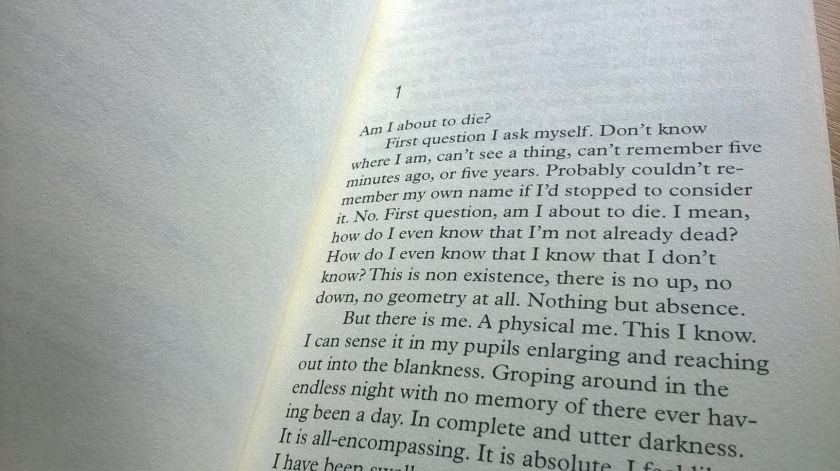
It is really interesting, read the writing and then looking at the digital footprint it is based on, there is a real creativity in the writing and the quality of the language used doesn’t really seem to match the simplicity of the data that is given. This is quite effective though, on the one hand it captures the reader in me and makes me want to read more and really look in to the language and try and decipher a meaning behind the piece, however the digital native in me just wants to flick through the screenshots of information as this is a practice that makes reading easy for me. By just flicking through the book, disregarding the text and making my own impression from Scourti’s digital footprint, am I using the book wrong, or engaging with the piece the wrong way? Or is this what Scourti predicted or intended to happen, to test how people who read it differently and see what interpretations they form as a result? One thing I have noted is my style of reading when approaching a piece that has both images and text in, like a magazine for example. I would flick through the images and gauge the general tone of the text, generating impressions from the images, before seeing a piece of text that really catches my eye and settling down to read it. I then make my way piece by piece through all the over bits of text, skipping over the least exciting ones and leaving them to the end. This fragmented, nonlinear approach to reading can only be the product of my viewing content on the Internet which is always fluctuating and presenting different pieces of information. As a reader on the Internet I have the role of sifting through the content and deciding which may be appropriate for me to read, a practice which I clearly apply offline too when confronted with both text and image data.
The one drawback about the book for me, is the poor quality in printing of the screenshots, whether this was intended or whether it was simply the effect of the printing method used. However the loss in quality could signify other things, although for me at first it was disappointing to think that Scourti hadn’t put more effort into the quality of the images, there is a real conceptual reasoning behind this. The consequent pixellation in the images suggests that the digital footprint, this online persona is nothing compared to the power of writing, the power of imagination and the power of actually reading something in print. Creating the impression that the online presence is just a partial representation, constantly being mediated, masked and misinterpreted by being viewed through a screen. In addition to this, for those who think the writing is confusing and doesn’t match up to what the screenshot says, it demonstrates that the online presence is flawed, you can’t see the person in their entirety, therefore you have the capacity to misinterpret them and get a false impression. This book, with all its apparent flaws is really good at getting the viewer to think and challenge what they are seeing, not necessarily something they do when viewing material online.
Overall I am really pleased I have researched Erica Scourti’s work and I will continue to follow her progress as artist because she is engaging with the same ideas I am, but in quite a different way. The use of herself as a subject is quite brave, but also not dissimilar to a number of other artists, who usually feel that they can represent themselves better than anyone else can. However Scourti has taken it a step further and has introduced a flawed representation of herself, created by herself, to make a statement about the way you can misinterpret a person from their digital footprint. This piece of work suggests that you can’t find out all about a person from their fragmented identity placed online, all you are seeing is the mediated representation they have created for you. This provoked me to start thinking, that perhaps computers, as they take all the searches made, tags listed and content posted could produce entirely the wrong impression of a person, yet still call it accurate. Researching this book has been really useful to me and I will definitely be taking on board some of the ideas that Erica Scourti has engaged with in her project. The one key thing to remember for me, is that sometimes, quality doesn’t often equal effectiveness, Scourti’s pixellated images in the book were far more effective once I had reflected on the reasoning behind them. When approaching the creative process for my own project and thinking about presentation methods I need to balance this idea of quality and effectiveness, to see whether an alternative route would be more effective.
